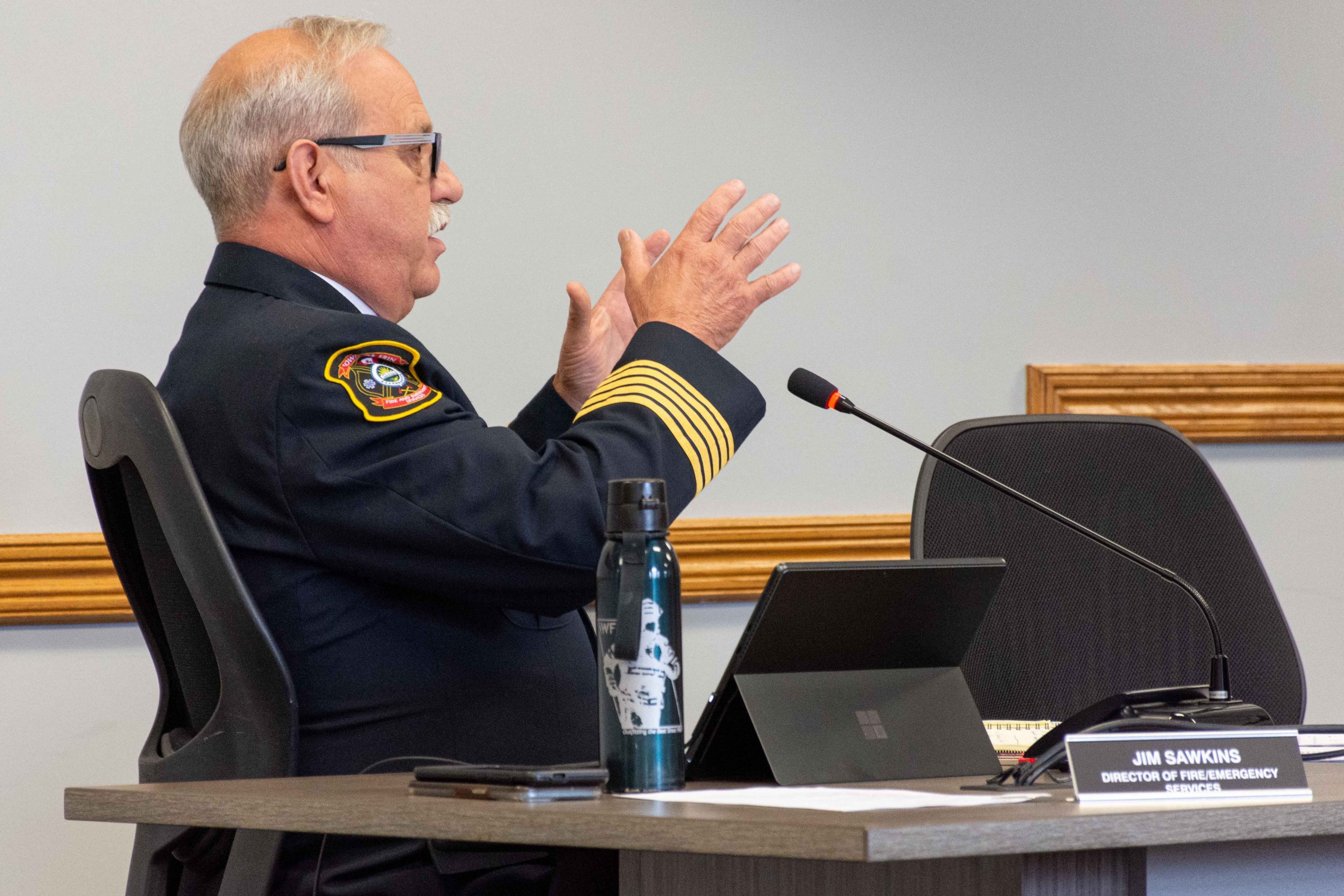ERIN – On March 24 at around 9am, Erin village’s water pressure dropped in mere seconds as water gushed from the watermain below Erin’s water tower.
A contractor doing work for the town’s new wastewater treatment plant had broken the line, and the south end of the village was left without water.
Though the break was repaired and water pressure up by 1:30pm that afternoon, a boil water advisory had been implemented earlier by Wellington-Dufferin-Guelph Public Health.
The Ontario Clean Water Agency (OCWA) operates the town’s water systems, and at the time OCWA regional manager Caralynn McRae told the Advertiser the advisory was a “standard precautionary procedure” because of the “possible risk of contamination.”
The town posted notices about the advisory to social media channels at the time, but complaints to the town over the course of two days, between March 24 and 26, when the advisory was lifted, suggested many residents were concerned about how the information was distributed.
Erin council passed a motion from councillor Bridget Ryan in April compelling staff to report back to council on what happened, the key roles and responsibilities of staff, and an action plan to notify residents “in an expedient manner” in the future.
Fire Chief Jim Sawkins presented a post-incident analysis to council during a July 13 meeting in response to Ryan’s motion, detailing three key observations.

Erin councillor Bridget Ryan listens as fire chief Jim Sawkins (out of frame) presents findings and recommendations from a post-incident analysis following a boil water advisory in Erin in March. Photo by Jordan Snobelen
An emergency control group consisting largely of senior department heads, including Sawkins and the mayor, did not meet to discuss or deal with the situation, Sawkins found.
“An emergency/incident that involves more than three members of the [group] or an event that affects a large portion of the municipality shall result in a meeting with the full [group] either in person in the Emergency Operations Centre or virtually,” Sawkins wrote in a recommendation.
Sawkins admitted he did not contact Wellington County’s emergency management coordinator.
“It just opens up a lot of doors for us and takes a lot off our plate … while we can concentrate on the situation,” he told council.
He recommended the county emergency manager be notified in the future.
Sawkins also determined communication by Erin staff about the advisory was “haphazard.”
“It was basically shoot from the hip,” Sawkins told council, adding “ideas sort of came up as we moved along.”
Emergency control group members did eventually met during Sawkins’s post-incident review and submitted ways to improve emergency communications, with 10 recommendations being made.
Those recommendations include a front-page alert on the town’s website, embracing all social media platforms, the use of radio and online news media, email notifications, establishing a phone hotline, hand-delivering notices, and use of the county’s Alert Ready system.
One of the recommendations was implemented earlier this week when a boil water advisory was issued for the village of Hillsburgh following the discovery of E. coli in a water sample.
From Station 50, 25 volunteer firefighters and two staff set out to hand-deliver printed notices to village residents connected to the town’s water supply and affected by the advisory.
Council heard Thursday that the town’s response was “night and day” from the March incident.
“It’s important that we use all these emergencies as a learning experience and grow from it – nobody’s perfect,” Sawkins remarked.
In his report, the chief wrote, “It’s important that … we identify our shortcomings and find ways to overcome them.
“The greatest lesson that we can take away from this experience is that the emergency control group should have gathered to discuss the situation and implement an incident action plan that would have addressed many, if not all, of the aforementioned post-incident analysis outcomes,” Sawkins concluded.




